Best Museums in the United States You Need to Visit
Disclaimer: This post might contain affiliate links, which means we get a small commission if you make a purchase (at no extra cost to you).
Want to visit some of the coolest museums in the United States? Read on to learn about the best museums in the USA!
Getting lost in a museum is always a good idea for us!
The United States is full of amazing museums to visit from art museums to history museums to the niche and unique. With the help of our blogger friends, we’ve compiled a list of some of the best museums in the United States. Explore and visit one of these amazing museums in the US to take your trip to the next level!
Best Art Museums in the United States
Museum of Modern Art New York City
Visiting MoMA is one of the unmissable things to do in New York. The Museum of Modern Art of New York, is one of the most interesting museums in the United States. Its main focus is modern and contemporary art and it has a massive exhibit where art geeks will be entertained for hours at end.
Located on 11 West 53 Street, Manhattan, MOMA is open every day from 10.30 am to 5:30 pm. Closing time is 9:00 pm on Fridays and on the first Thursday of the month. Admission is $25 USD and you may want to book in advance for a swift entry and to skip the line at the ticket counter. Classes and groups are encouraged to take guided tours which usually last around 2.5 hours.
The exhibit at Moma includes some of the most iconic pieces of modern and contemporary art you have likely read about in art books or heard about in art classes. Among the paintings on display, you will be able to see the works of artists such as Starry Night and The Olive Tree of Vincent van Gogh; Campbell Soup’s Cans by Warhol; pieces by Matisse and Gauguin; Picasso’s Les Demoiselles and Le Bateau; The Persistence of Dali and paintings by Pollock.
Contributed by Claudia of My Adventures Across the World. Follow her adventures on Instagram!
The Broad, Los Angeles
One of my all-time favourite museums I ever visited was The Broad in Los Angeles. It’s a contemporary art museum located right next to the Walt Disney Concert Hall and close to the Grand Central Market in downtown LA. In the museum, you can find more than 2000 art pieces of contemporary art from more than 200 artists worldwide. Some of these featured artists are Mark Bradford, Barbara Kruger, Kerry James Marshall, Ed Ruscha and many, many more. So, if you’re into modern art, The Broad is the perfect place for you to be! However, even if you’re not really a fan of modern art, there are two simple reasons why you should still visit The Broad.

First, the tickets are completely free. Yes, you read it correctly, you don’t have to pay anything to enter this museum. Therefore, I recommend reserving them online in advance to avoid standing in a queue for too long. The second reason why you should visit The Broad is an awesome installation from the artist Yayoi Kusama called Infinity Mirrored Room. If you enter it, you find yourself in a mirror-lined room with LED lights flashing in different colors. Unfortunately, you have only 45 seconds to enjoy the mysterious atmosphere inside. However, it’s really a one-of-a-kind and magical experience you shouldn’t miss!
Next to the installation, in the entrance hall, there’s an escalator leading to the upper floor. That’s the area where the actual exhibition takes place. Take your time and admire astonishing masterpieces such as the Balloon Dog from Jeff Koons or other amazing artworks from Andy Warhol and co.
Contributed by Lina of World of Lina. Follow along with her adventures on Instagram
Isabella Stewart Gardner Museum
The Isabella Stewart Gardner Museum in Boston, Massachusetts is an art museum in the United States featuring an extensive private collection, a beautiful courtyard, and a 30-year unsolved mystery. The museum was founded in 1903 by Isabella Gardner, who had collected more than 7,500 paintings, sculptures, pieces of furniture, and other objects. The museum has a homey feel, with the art being displayed in furnished rooms. Isabella herself also lived in the museum and continued to rearrange the art and installations for the rest of her life.
The museum is easily one of the most instagrammable places in Boston, with its lush green courtyard. The architecture of the building was inspired by 15th-century Venetian palaces, featuring open balconies and archways overlooking the courtyard on each floor. The collections are even more impressive; you’ll find works by Rembrandt, Michelangelo, Raphael, and Degas. The museum also houses the first Matisse ever to become part of an American collection; this colorful oil painting of a terrace in Saint-Tropez is showcased in the Yellow Room.

What is perhaps most intriguing about the museum, however, is its 30-year unsolved robbery. In 1990, two thieves disguised as police officers made off with $500 million in art, including a Rembrandt and Vermeer. The works have still yet to be recovered, and the museum is offering a $10 million reward for information that leads to the stolen art. Because Isabella Gardner’s will stated that no changes were to be made to the installations, empty spaces and frames remain where the stolen art was once displayed
All types of visitors would enjoy the museum, including children. Children under 18 actually get free admission, and there’s also an education studio for kids 7 and up to create their own art. Admission for adults is $15, while tickets are $10 for students and $12 for seniors. The museum is located in Boston’s Back Bay Fens and is easily accessible by public transport on the Greenline. Even better, it’s only a short walk from the Museum of Fine Arts, another major Boston attraction
Contributed by Lily of Imperfect Idealist Follow along with her journeys on Instagram
Milwaukee Art Museum
Milwaukee may not be on the radar of many travelers out there. However, the largest capital of Wisconsin holds plenty of things to do. Not only does Milwaukee boast some of the best restaurants and breweries in the Dairy State, but on top, the town boasts one of the top museums in the United States.
I am talking about the Milwaukee Art Museum. It counts on four floors of over forty galleries of art that are rotated regularly with works from antiquity to the present. There are more than 2,500 pieces of art, including one of the largest collections of work by Georgia O’Keefe. However, the building is probably most famous for its Santiago Calatrava-designed Quadracci Pavilion and its wings.
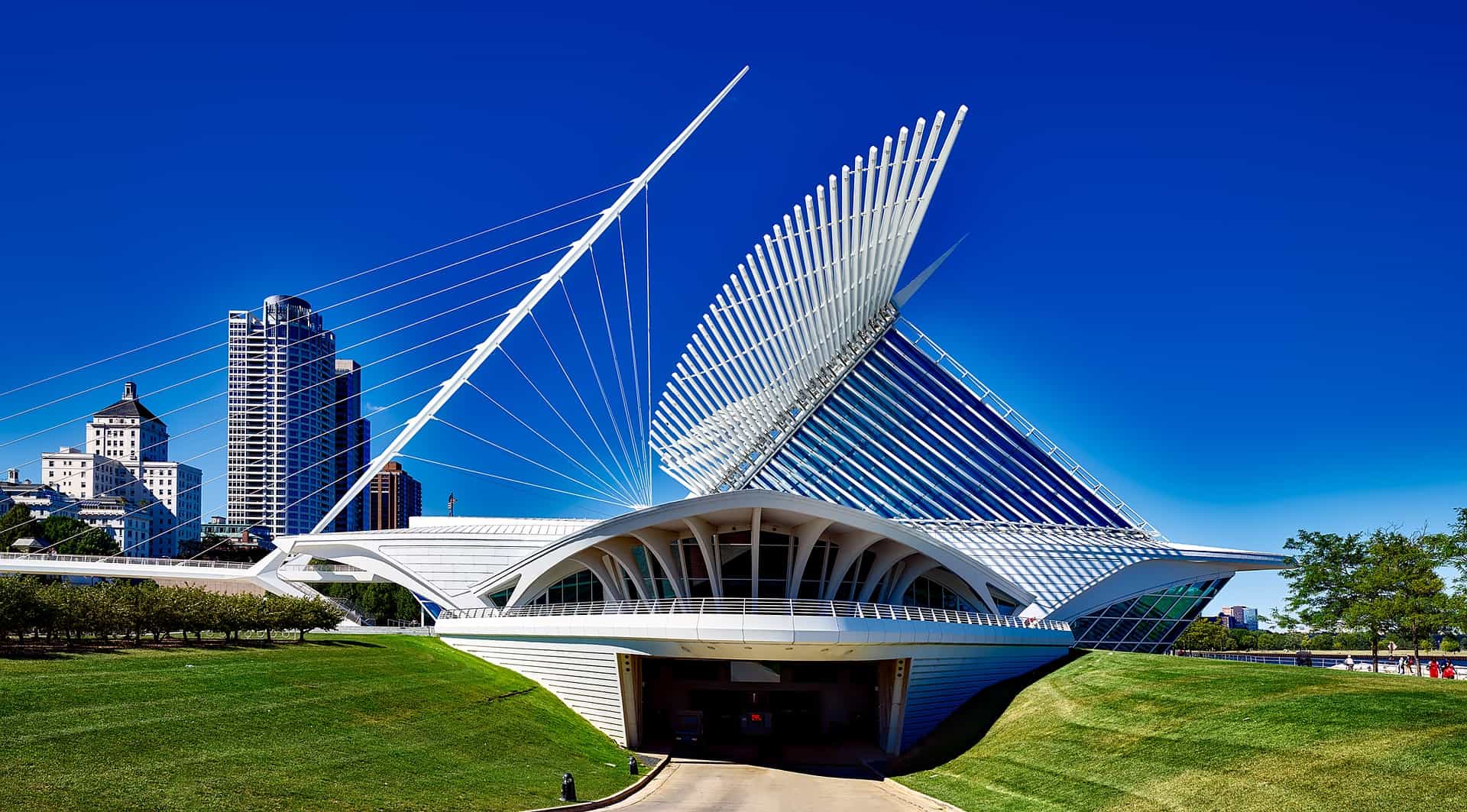
Other highlights are the “American Decorative Arts and Chipstone Foundation” and “Marcia and Granvil Specks Collection”. Both collections hold items that can’t be anywhere else in the US. Indeed, the American Collections present one of the nation’s most important ensembles of pre-1900 decorative arts, and the Marcia and Granvil Specks Collection is considered one of the most important collections of German Expressionist prints in the US.
If you are wondering where to stay in Milwaukee in order to be close to the best museums, I recommend staying in Downtown Milwaukee. From an assortment of beers to a full-blown dinner, Milwaukee Downtown has what you need to make your visit unforgettable. You will be close to major restaurants and bars to end your night the right way.
Location:
Milwaukee Art Museum
700 N. Art Museum Drive
Milwaukee, WI 53202
Price: 19$
Contributed by Paulina of Paulina on the Road. Follow her adventures on Instagram
Nelson-Atkins Museum of Art
Art fans visiting Kansas City, Missouri, shouldn’t miss a stop at the Nelson-Atkins Museum of Art. Since opening its doors in 1933, the museum has grown its collections, now housing over 40,000 art objects. Its location in the heartland of America belies some of the most treasured collections art admirers will recognize.
Just as there are so many other great outdoor activities to do in Kansas City, the Nelson-Atkins Museum is instantly recognizable by many people for its sculpture garden. As a fun piece of art, the main building acts as a net in a giant game of badminton with four giant shuttlecocks spread out over the gardens. The “Shuttlecocks” bring a sense of whimsy and fun to the art scene. The sculpture garden can be enjoyed at any time and makes for a magnificent backdrop for a picnic.
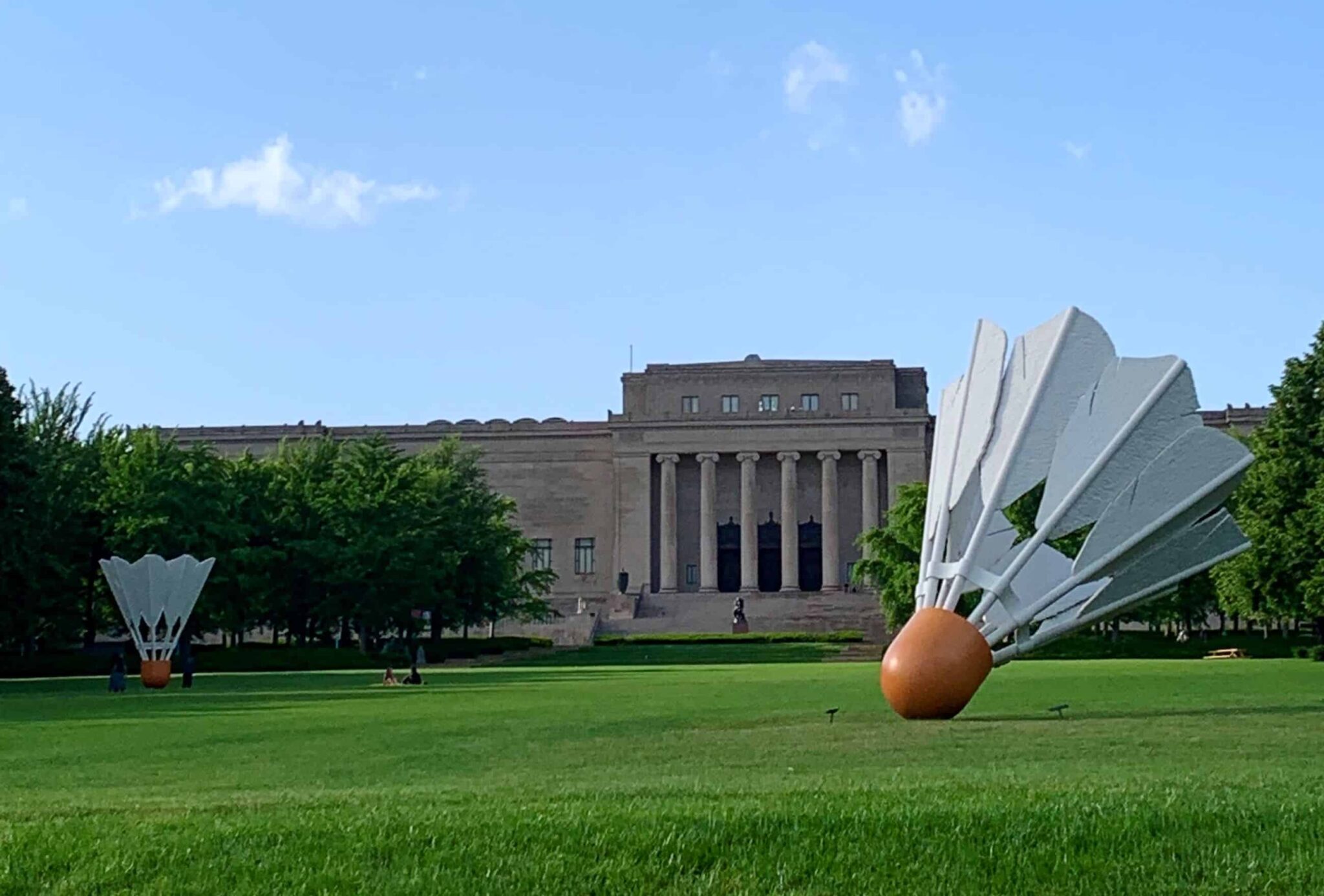
Inside, visitors will find one of the top three Asian art collections in the world, outside Asia. One of the centerpieces of the collection is a Chinese Buddhist sculpture from the 11th or 12th century, the Guanyin of the Southern Sea. The museum houses an impressive impressionist and post-impressionist collection. The Boulevard des Capucines by Claude Monet is perhaps one of the best-known pieces on display. Caravaggio’s Saint John the Baptist in the Wilderness will appeal to fans of the Italian Baroque period.
The museum’s philosophy is to make art approachable to all. It does so in several ways. Admission, other than for special exhibits, is free. Thursday and Friday evenings, the museum remains open until 9 pm. Third Thursday sees a host of community activities at the museum, including live local bands. These policies encourage people to take their time in exploring the museum at a more leisurely pace and in returning to the museum time and again.
Because of its ability to make art approachable to everyone, the Nelson-Atkins Museum of Art in Kansas City, Missouri, is an art museum that shouldn’t be missed when traveling through the midwest.
Recommended by Annick Lenoir-Peek, The Common Traveler
National Gallery of Art in Washington DC
Washington, D.C. is one of the best places to visit in the United States, especially if you love museums. Whether you are interested in the prehistoric era, African American history, or the portraits of the U.S. Presidents, there is a museum for you. One of the best free museums in the capital for art-lovers is the National Gallery of Art. Located just off the National Mall, the National Gallery of Art has 2 museums in one. It’s West Building houses classical art, sculpture, and artifacts, while the East Building showcases modern and contemporary art. Works from prominent artists such as Pollock, O’Keefe, and Rothko can be found in the East Building. The West Building houses Van Gogh, da Vinci, Monet, and Degas, just to name a few artists.

Depending on which building you visit, even the architecture coordinates with the art housed inside it. While the classic art side looks like a traditional museum, the modern art side has a more contemporary feel. Regardless of which side you explore, the seating is plentiful and the atmosphere is welcoming, so you enjoy your visit no matter where you are. The buildings are connected by an underground tunnel that takes you through the gift shop, café, and even more art, a light installation called Multiverse.
The museum also offers some nice outdoor spaces to admire the art, including the sculpture garden next to the West Building and the roof terrace on top of the East Building. The sculpture garden features Jazz in the Garden concerts every Friday night in the summer and has an ice rink during the winter, while the roof terrace contains the iconic blue rooster sculpture. No matter what time of year or what type of art you are interested in, when visiting D.C., the National Gallery of Art is a must-visit.
Contributed by Jordan of Georgia Girl Meets World
The Metropolitan Museum of Art in New York City
The Metropolitan Museum of Art in New York City (or The Met, as it more commonly called) is one of the most famous art museums in the world. In addition to paintings, sculptures and photography, there are large collections of cultural artefacts from around the world, musical instruments, armor and much more. It is possible to spend hours – or even days – wandering around the enormous collection and still not see it all. In addition to the permanent collection, there are frequent temporary exhibitions, including the famous costume museum displays, which are themed with the annual Met Gala.
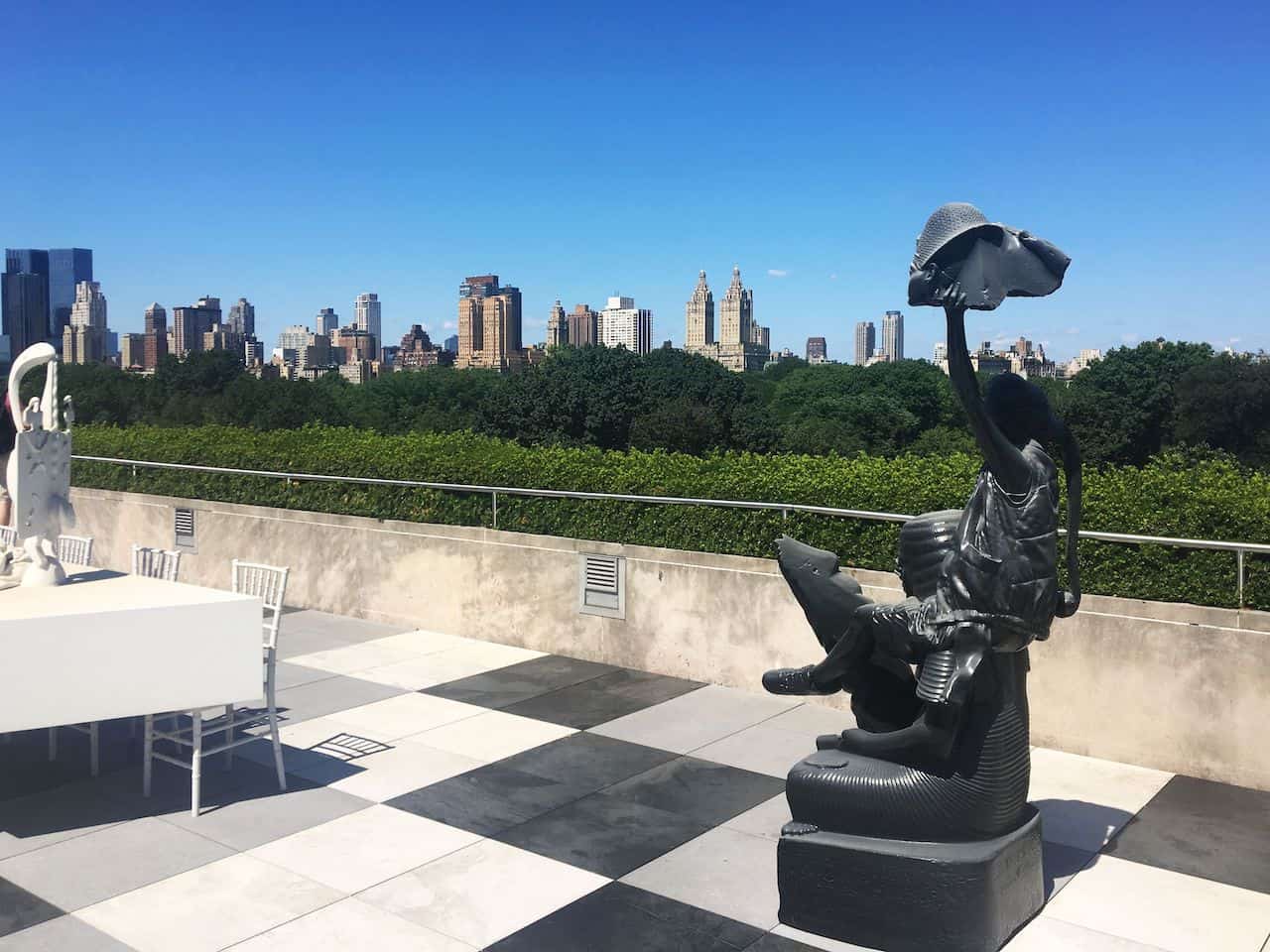
The museum is spread over three (soon to be two) locations. The Cloisters in uptown Manhattan houses the museum’s medieval collection. The building is custom-built – formed from a collection of actual cloisters moved from European monasteries. There are several courtyards to enjoy, and in summer, there is a café in one of the lower cloisters.
In the main museum on Fifth Avenue, there is also a café on the roof garden in summer, along with an annual site-specific installation. The terrace has one of the best views of Central Park in the city. Another popular spot is the Temple of Dendur – an actual Egyptian temple set in a specially designed room with an entire wall of glass. Don’t miss the nearby mummies and large ancient Egyptian collection. Other highlights of the Met include an indoor Chinese garden, reached though a circular moon gate; towering statues of Buddha; re-created French rooms; the façade of a bank moved from lower Manhattan; a light-filled indoor garden filled with ancient European statues; and a Spanish courtyard. There is something for everyone at the Met!
Contributed by James of Travel Collecting
The Art Institute of Chicago
The Art Institute of Chicago is the city’s most popular museum, and for good reason. There is a little bit of something for everyone in this sprawling art museum which boasts over 300,000 diverse works of art. The museum twists and turns through hallways decorated with sculptures, ancient artifacts, pottery, textiles, and paintings in diverse genres, styles, and time periods. The building itself is a work of art.
Visiting the Art Institute of Chicago is like hopping into a time machine to explore past civilizations. There’s a chance to discover fascinating art from the ancient Egyptians. Move through six continents to explore artifacts from Chinese and Japanese cultures, observe works from India and the Himalayas, and even visit exhibitions on Native American and African art. Be transported to the Byzantine empire, or gawk at extravagant paintings from the Renaissance time. Of course, there is a wide range of modern artist using methods of impressionism, surrealism, and cubism.
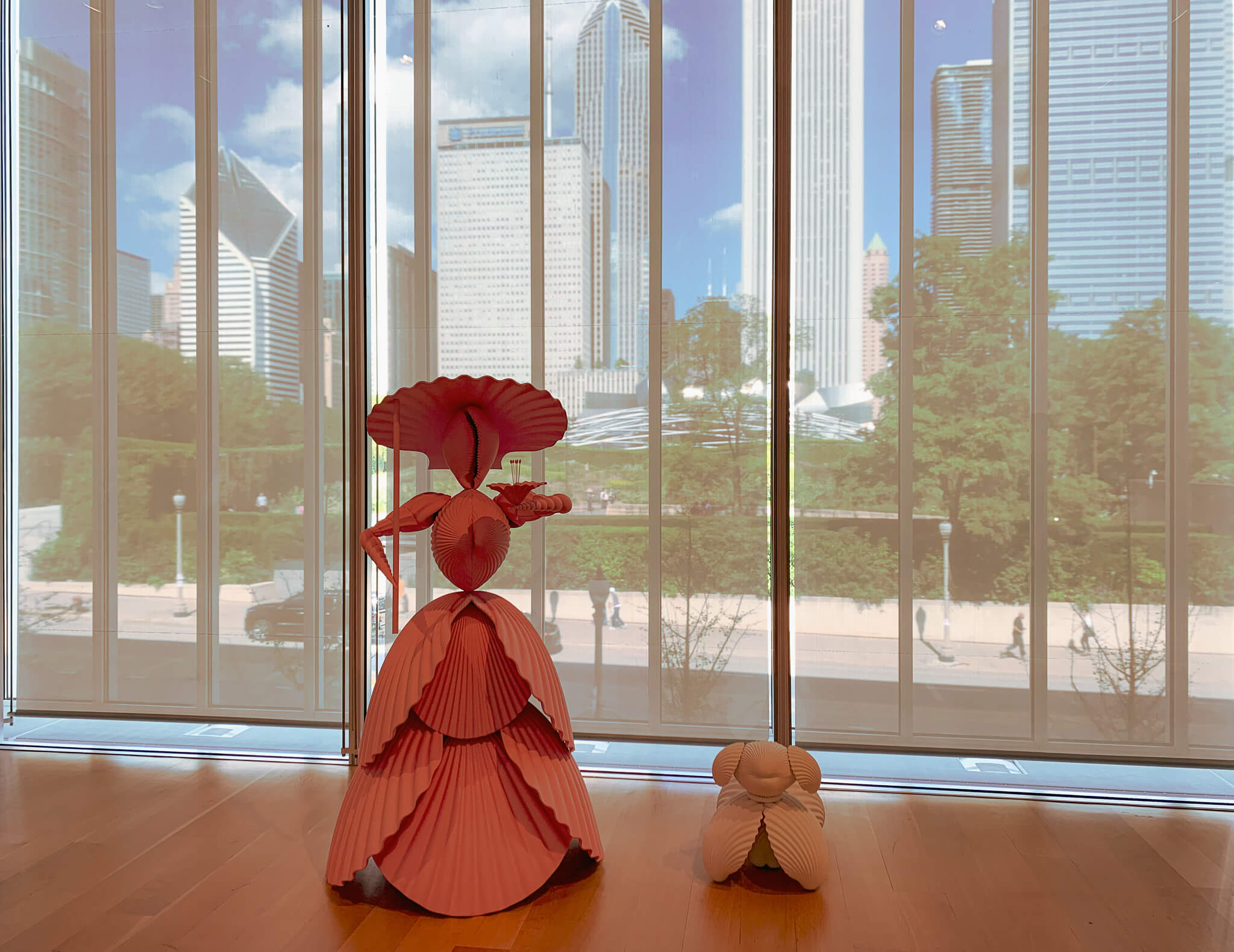
Highlights of the museum include:
- American Gothic, Grant Wood
- A Sunday on La Grande Jatte, Georges Seurat
- Nighthawks, Edward Hopper
On top of these highlighted paintings, find many works of art by Salvador Dalí, Pablo Picasso, Monet, Van Gogh, El Greco, Andy Warhol, and many more well-established artists. The museum is constantly hosting temporary exhibits, which stay on average for 3-6 months.
It’s possible to spend the whole day appreciating the thorough museum. The best way to explore is to make a list of highlights you care to see, otherwise the museum can feel a bit overwhelming. Plan on spending at least 4 hours here to really soak in all of the diverse exhibitions. After you feel you’ve seen all you could, don’t miss the chance to walk one block over to Millennial Park. This is home to one of Chicago’s most iconic reflective sculpture, “Cloud Gate,” or simply known as “the bean.”
Practical Info
Find the Art Institute of Chicago at: 111 S Michigan Ave. Chicago. It’s located on the outskirts of Grant Park.
General Admission: $25
Contributed by Megan of Packing up the Pieces. Follow along with her journeys on Facebook
Salvador Dalí Museum
If you like modern and surrealistic art, the Salvador Dalí Museum in Saint Petersburg (Florida) is a must-see. The museum has a collection of over 2400 artworks by the famous Spanish artist Salvador Dalí. It was founded because of a private collection by A. Reynolds and Eleanor Morse, who was fascinated by the works of Dalí and also became friends with the artist and his wife Gala. The building of the museum is a piece of art as well, with a hand that looks just like a work by Dalí. The museum also has an app, which allows you to explore the museum from everywhere in the world.
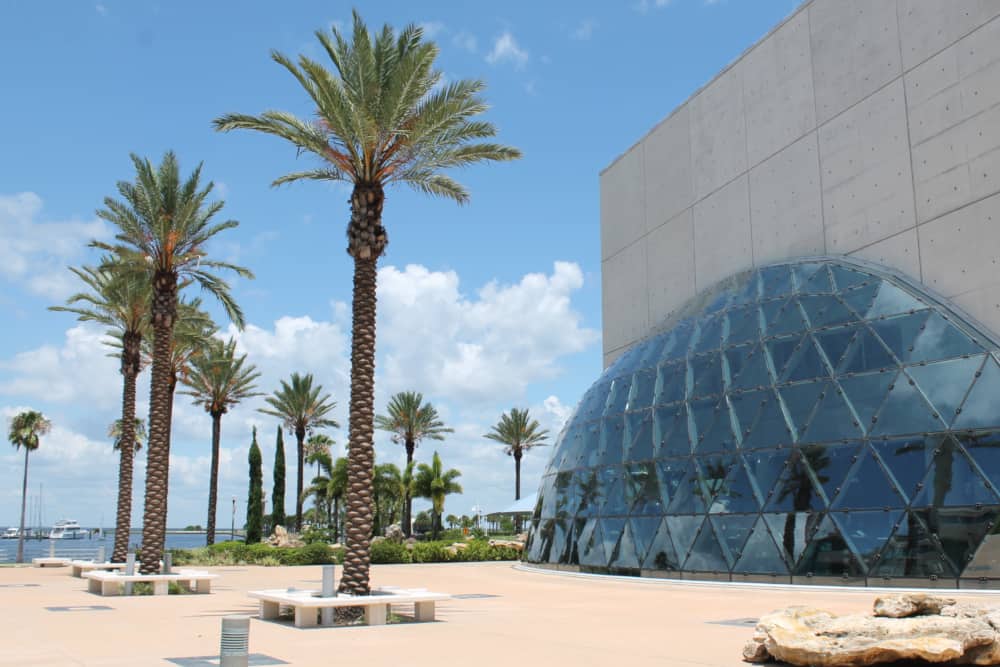
Museum Highlights
Lithography: Lincoln in Davilision
There are two versions of this artwork made by Salvador Dali himself. One can be found in the Dalí Theatre and Museum in Spain (where Dalí was buried) and the second one resides in Florida. From 20 feet away, it’s a portrait of former president Abraham Lincoln, but up close, you will see lots of different images. Very interesting to see, you’ll see something different every time you’ll approach the artwork.
Garden
Surrounding the museum there is a garden, which is also in the style of Dalí’s art. There are a labyrinth and a wish tree, where thousands of colorful papers are tied to with the wishes of the visitors of the museum. One of the highlights of the garden is the bench with the melting clock, which you can also find in many of Dali’s paintings.
Location:
Saint Petersburg, Florida
Cost: $25 (discounts available)
Contributed by Jacoba of Opreismecto
Best History Museums in the United States
National Museum of African American History and Culture
The next time that you’re in Washington, DC, the museum that should be at the top of your list is the National Museum of African American History and Culture. The museum is worth a visit by people of all ages, and I recommend it to anyone that enjoys history or just wants to learn more about the Black American experience.
The museum’s History Galleries are organized to demonstrate the rise of African American’s out of slavery, as you start on the bottom floor with the middle passage, rise to the civil rights era on the second floor, and then move to the impact that black people have had on the culture of the United States over time. I will note that some of the topics/content found in the museum can be a little heavy, but also quite moving as you learn about how former slaves persevered despite the adversities faced.
While at the museum, you must check out the Sweet Home Café, which provides delicious food, particular to African Americans, based on region in the United States. It’s probably the best museum café that I’ve ever visited, so I highly recommend it. Also, if you have additional time after seeing the History Galleries below ground, the Culture Galleries and exhibits on popular musicians should be your next stop to “live” popular blues, R&B, pop, and hip-hop music of the past.
The cost to visit the museum is totally free! The only caveat is that you do need to secure a timed pass to secure entry into the museum, given its high popularity. In all of the United States, no museum (or history book, for that matter) tells the story of black Americans as comprehensively as this museum does, which is why it is just so special.
Contributed by Christen of Travel Wander Grow. Follow along with her journeys on her Instagram
Learn more about visiting places in the United States that highlight Black history and culture.
Senator John Heinz History Center
The Senator John Heinz History Center in Pittsburgh is one of the flagship museums of this relatively small but culturally rich city. Pittsburgh has gone from a smoke-filled coal town to one of the largest healthcare research cities on the east coast in a couple of decades. This amazing transformation is beautifully captured within this museum.
Pittsburgh is not only the birthplace of Andy Warhol but also ketchup. Yes, ketchup! The Heinz History museum is named after H.J.Heinz who founded one of the biggest food companies in the world and the Heinz ketchup that we all love. The most famous exhibition here, ‘From Farm to Table with the Heinz Collection’ documents the journey of this incredible man that went from making pickles in his mother’s garden to building an empire of immeasurable size.
The exhibition boasts various glass containers each of which was used to store pickles and jams from 1876 to the present day upside-down ketchup bottle we have. It also documents every ketchup ad developed, some of which are insanely hilarious in retrospect. The keystone though is a very Instagram worthy 10 foot tall ketchup bottle.

Other exhibitions such as ‘The Legacy of Fred Rogers’ and ‘Women Forging the Way’ are powerful and delicately curated collections. They portray the lives of those figures which were key in making the city known over the country. The ‘Vietnam War’ temporary exhibition last year drew a lot of crowds from all over the city.
Due to the unique concepts and artifacts, this museum has curated, it is frequented by college students and families alike. On weekends especially the traffic is substantial. Located at 1212 Smallman St and with an $18 admission for adults, it is one of the best museums to visit in Pittsburgh.
Contributed by Kanupriyaa of My Lost Camel Follow along with her on Instagram
New Orleans’ Backstreet Cultural Museum
New Orleans’ Backstreet Cultural Museum is a place that every tourist traveling to New Orleans should visit, yet few do.
Tucked inside an unassuming house in Treme, New Orleans’ oldest traditionally black neighborhood, the museum is the love child of self-taught photographer Sylvester Francis. Decades ago, Francis started photographing the black culture that is quintessential New Orleans—second-line funeral parades, Mardi Gras Indian costumes, and the jazz scene—as a way to avoid paying for other people’s photos.
His rule? “If I was to take anybody’s picture, I’d give them a copy.” Over the years, as Francis handed out copies of his increasingly skilled photography, people began to gift him items in return. He amassed a collection of everything from jazz memorabilia to old clothing to the vibrant, hand-made feather costumes of the famed Mardi Gras Indians.
These days, the museum is a lovingly curated collection of black culture and history in New Orleans—a perspective that is often overlooked or forgotten in favor of drunken debauchery in more white-washed or gentrified parts of the city. Clearly crafted by someone strongly attached to his neighborhood and roots, the museum feels more like wandering through a grandfather’s living room than it does visiting a cut and dry exhibit. Visit during Mardi Gras season in New Orleans, and you’re sure to get an invite to come watch the famous Red Beans parade that ends right around the museum’s front door!
If you want a deeper understanding of the culture at New Orleans’ foundation—or just want to see some really fantastically colorful Mardi Gras costumes—the Backstreet Cultural Museum should be your first stop.
The Backstreet Museum is at 1116 Henriette Delille Street; admission is $10 per person.
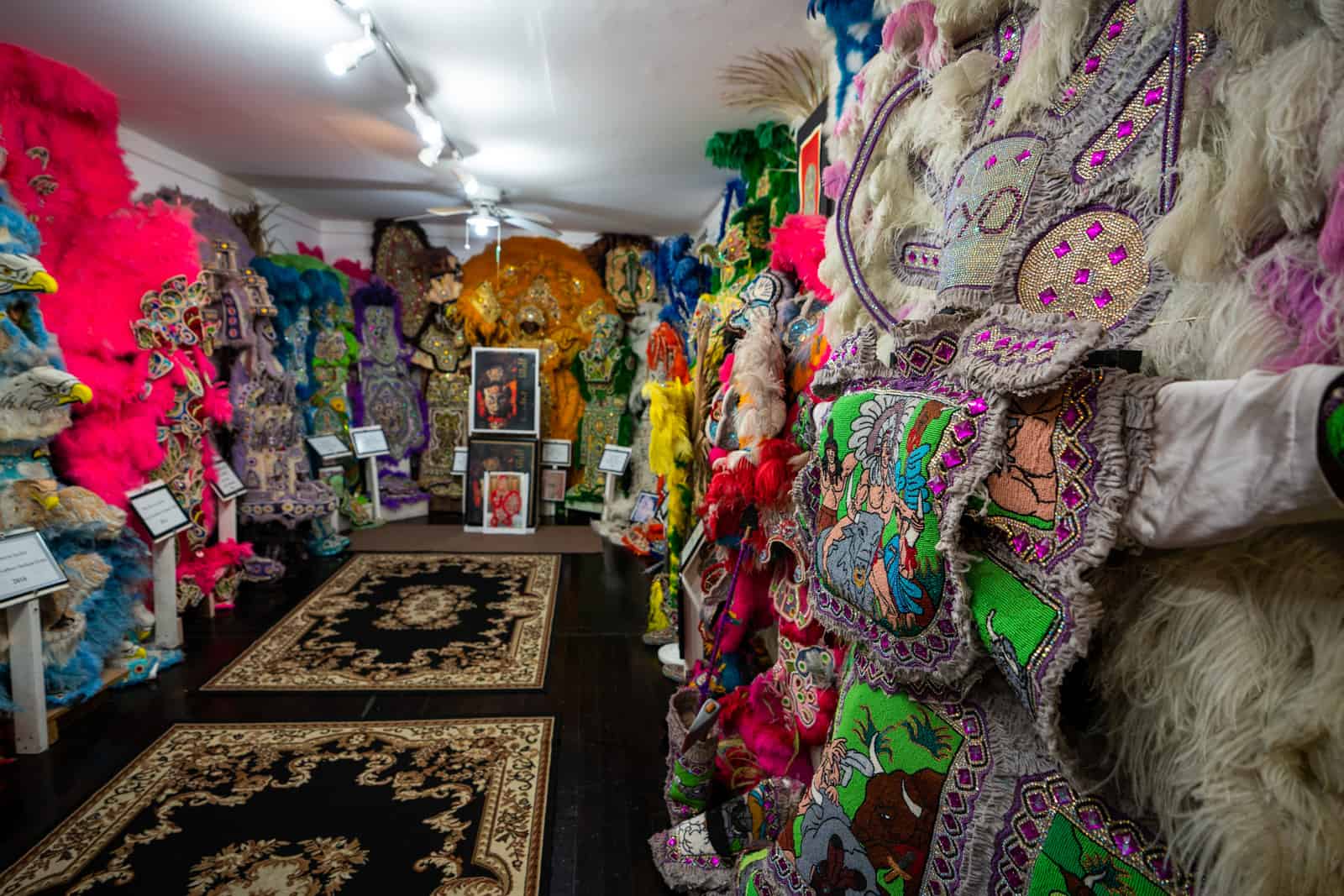
Contributed by Alex of Lost with Purpose
United States Holocaust Memorial Museum
After 5 years as a digital nomad, traveling the US and abroad, exploring dozens of museums, galleries, and exhibits the one that left the biggest impression on me is the US Holocaust Memorial Museum.
The Holocaust Memorial Museum in Washington, DC is located just off the National Mall and is a must-see for any visitors to the nation’s capital.
This historical museum will evoke a level of emotion and compassion unparalleled by other galleries while delivering some powerful context around one of history’s most heartbreaking eras. Exhibits are cleverly designed to communicate an extraordinary amount of information in a digestible format including the use of art, photographs, letters, audio narratives, video, and 3D models. Visitors will have the opportunity to hear, see and touch history in a way that leaves a lasting impression. This style allows the museum to be enjoyed by all ages from young children to the elderly.
With over 260,000 square feet spread across 3 floors, the museum offers multiple rotating exhibits that visitors can spend hours exploring.
For those searching for knowledge and understanding, the permanent exhibit, “The Holocaust” offers an extensive chronological history of the years 1933-1945. Delivered mostly through artifacts, photographs, and written panels, this exhibit takes the deepest factual dive into the history of the Holocaust.
For those looking for a lasting impression, the “American Witnesses” exhibit will evoke emotions not easily forgotten. My personal favorite part of the museum, this is a must-see exhibit that details what the American soilders encountered when they found and liberated the Nazi concentration camps. If stretched for time, visitors should dedicate at least 20-30 minutes to visit this area of the museum.
Another impactful part of the museum, and my wife’s favorite area, is the Voices from Auschwitz installment. In a simple room featuring only benches, visitors can listen to the personal memories of Auschwitz survivors as their audio recordings play throughout the room. The powerful impact of this exhibit is not to be missed.
Tickets into the museum are free, but if you’re visiting during the spring or summer months admission lines can become quite lengthy. For just $1, you can reserve a time online for guaranteed entry.
Stephen Gary is the co-founder of Flashpacker Co, a lifestyle brand aimed at helping the growing number of global flashpackers get the most out of their adventures. He’s been a digital nomad for the past 5 years traveling all across the global while running several successful businesses. You can read more of his writing over on the Flashpacker Chronicles or on Instagram @FlashpackerCo.
National Underground Railroad Freedom Center
Tucked away along the banks of the Ohio River, Cincinnati is home to a spectacular civil rights museum; The National Underground Railroad Freedom Center. It is fitting the museum calls Cincinnati home as it is where thousands of slaves crossed the Ohio River to freedom.
While the exhibits and displays at The Freedom Center may be heartbreaking and difficult to face it is important that all people learn about freedom’s heroes and the injustices of the past. Step inside an actual slave pen, experience what it was like to be Rosa Parks and don’t forget to view the eternal flame. Many exhibits focus on the courage, cooperation, and perseverance shown by the abolitionist movements’ most influential figures during their fight to end human enslavement in America.
While this museum focuses mostly on the past there is a moving exhibit about Slavery today that highlights how slavery is still an issue in the modern world. Currently, there are upwards of 27 million people that are currently enslaved around the world, more than any other time in human history. This exhibit dives into this topic and is not to be missed. Throughout the year the museum does get a wide variety of exhibitions and puts on educational programs.
The cost to get into the museum is $15.00 an adult, $10.50 for children however, admission is free on Martin Luther King Day. Martin Luther King Day is a wonderful time to visit the museum as there are special programs, a parade and other events being held at and around the Freedom Center that day.
National Underground Railroad Freedom Center
50 E Freedom Way, Cincinnati, OH 45202
Contributed by Consistently Curious. Read more about the beautiful park right next to the Freedom Center: Smale Riverfront Park: The Cincinnati Riverwalk You Can’t Get Enough Of
Lower East Side Tenement Museum
Immigrants have played a pivotal role in the story of America and one of the best places to observe this history firsthand is to visit the Lower East Side Tenement Museum in New York City.
Founded in the late 1980s, visitors to this unique living history museum get to step back in time when they pass through the doors of 97 Orchard Street, a tenement that was once home to approximately 7,000 people from over 20 nations between 1863 and 1935. Out of the 22 apartments that once comprised the five-story tenement, seven have been restored, along with a lager beer hall that people can visit, each one showcasing a different time period and ethnic group when they would have lived there. Although their individual stories and backgrounds are different, all of the immigrants who lived at 97 Orchard Street shared one common thread- they all journeyed to America in search of a better life.
There are a total of six themed apartment tours along with three unique themed tours only offered on Thursday evenings. The apartment tours vary, ranging from immigrant families who operated their own sweatshops within the confines of their small 325-square-foot apartments to how two families, one Jewish and one Italian, survived through two of America’s most horrific economic periods, the Panic of 1873 and the Great Depression. No matter the tour you take, you’ll be amazed to see and learn about the resilience of the immigrants who lived on Orchard Street and how even in the most austere and unimaginable conditions like windowless apartments and no running water, they still managed to create new lives for themselves and future generations.
For many Americans, even those whose ancestors were not urban immigrants, it will prove a fascinating place to visit to experience the immigrant story and for non-Americans, it’s a wonderful first-hand telling of the country’s more modern past. For the six themed apartment tours, tickets cost $27 for adults and $22 for seniors and students. The Thursday evening tours are $28 and $23 respectively. Children six and older are permitted on the tours. Tickets sell out in advance as the number of visitors is capped due to the small space of 97 Orchard Street.
Contributed by Julie of the Red Headed Traveler. Follow along with her adventures on Facebook
Most Unique Museums in the United States
Best Science Museums in the United States
Tech Interactive San Jose
If you’re looking for a museum that will keep kids of all ages occupied, while not boring yourself half to sleep, Tech Interactive is a perfect choice. Nestled in downtown San Jose, about 40 minutes drive south of San Francisco, Tech Interactive is as hands-on as museums get.
It is a science and technology center and, as its name implies, Tech is focused on teaching Science, Technology, Engineering, the Arts, and Mathematics in an engaging and interesting way.
So get ready to experience virtual reality like never before at the Reboot Reality exhibit. Here you can soar above buildings like a bird, with a Virtual Reality set strapped to your face, while laying in a chair that dips and rises with your flight!
Create 3D paintings with a program that mimics the creation of art with oil paints, right down to the way it dries on a canvas. Or maybe you want to explore the world under the sea? Head to Wave Atlas, where you can swim to the ocean floor and create creatures to interact with.
If your interest lies in the biology field, check out the Living Colors Lab, where you can use lab equipment to engineer multi-colored bacteria, then look for it amongst others projected on a wall.
Younger children will love the Social Robots section of Tech Interactive, where they get to build and program a real robot using sensors. It also houses the IMAX dome theater, which is the world’s first laser projector for a dome theater and is truly a movie experience to behold.
There’s so much more to experience, but this should whet your appetite for a visit! Why not make a day of it and explore a few more family-friendly attractions in San Jose?
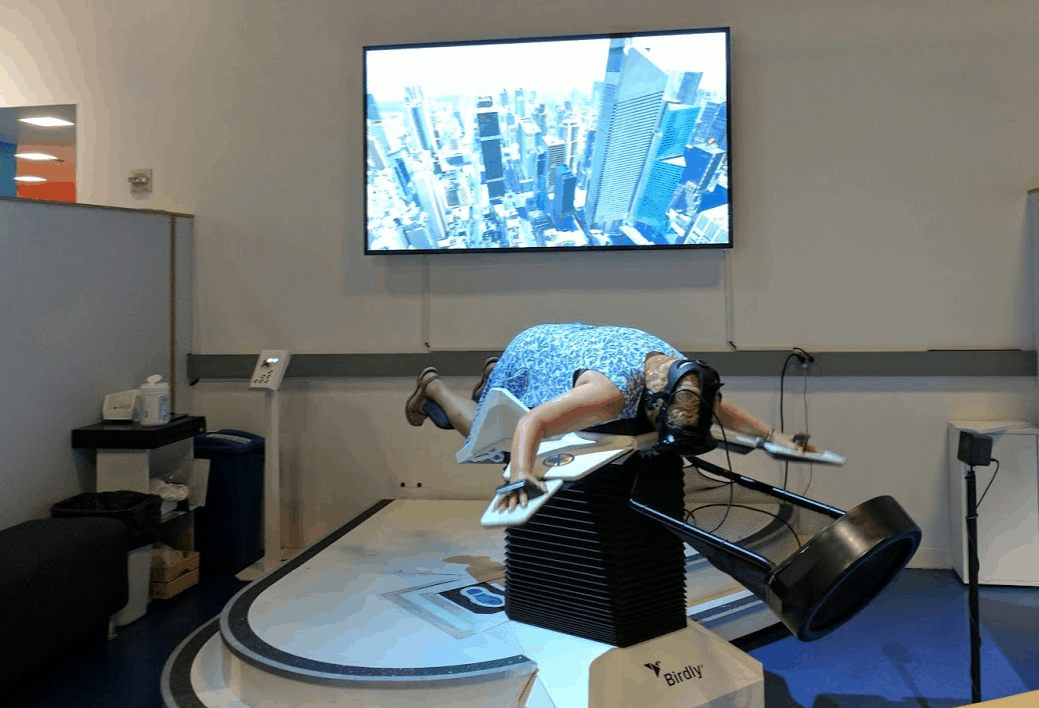
Where: The Tech Interactive, 201 S. Market Street, San Jose, California, 95113.
Cost:
Exhibits: Adults $25; Child (3-17), Student, and Seniors $20.
IMAX film: Adults $12; Child (3-17), Student, and Seniors $10.
Combo exhibits and IMAX: Adults $31; Child (3-17), Student, and Seniors $24.
Contributed by Katherine of Bright Lights of America. Follow along with her on Facebook
American Museum of Natural History in New York City
The American Museum of Natural History sits on Manhattan’s Upper West Side, across from Central Park. With twenty-six connected buildings and wings, forty-five permanent exhibits, rotating temporary galleries, a planetarium, and a library, it is one of the world’s largest natural history museums and one of the best museums in the United States!
The museum is dedicated to exploring culture, the universe, and the natural world. Its halls feature exhibits on human origin, biodiversity, forestry, mammals, and dinosaurs. It contains over 34 million specimens and artifacts.
It is home to the 15.5-ton iron Willamette Meteorite, found in Oregon. Visitors can also enjoy the Hayden Planetarium, among other exhibits dedicated to the origins of the universe.
A visit to the AMNH is incomplete without catching a glimpse of the iconic blue whale model, sitting above the Hall of Ocean Life, or seeing the two dinosaur halls. The halls feature a dinosaur trackway and fossils from Tyrannosaurus, Stegosaurus, and others. Together with additional mammal fossils, the halls make up the world’s largest fossil collection.
Visitors can spend hours, even days, at the American Museum of Natural History and barely scratch the surface of what there is to see. It’s a must-see museum for anyone interested in culture, history, science, or space. Ideal for families as well, children will enjoy the dinosaur exhibits and children’s Discovery Center.
Suggested general admission to the AMNH is $23 for adults, $13 for children. Pay what you wish admission is available at ticket counters, in person.
It is located at 200 Central Park West, New York NY 10024.
Contributed by Tory of Tori Leigh.
Field Museum- Chicago
The Field Museum in Chicago is a natural history museum and one of the largest in the world. In its massive hall, the museum houses one of the largest dinosaurs ever to be discovered. The museum houses at least 9 permanent collections and has a host of world-renowned educational and scientific programs available to the public. The museum is a wonderful experience for anyone, and draws over 2 million visitors a year due to its extensive collections and up to date scientific findings, and continuous educational opportunities.
One of the most interesting exhibits is Inside Ancient Egypt which has 23 mummies on display as well as 31 mummified animals. The Egypt exhibit is one of the most fascinating and popular exhibits in the museum. Other exhibits include Evolving Planet, What Is An Animal, World of Mammals, Traveling the Pacific, and the Grainger Hall of Gems in which the color spectrum is beautifully displayed through the various rocks as well as the magnificent Tiffany Glass window display.
The museum has over 20 million specimens on display and even a 25,000 volume library. While it’s nature and cultural exhibits are the primary draw for many visitors, temporary exhibits are also very popular, such as the King Tut exhibit that made it through the museum. The Field Museum is also home to Sue, the largest, most complete, and best-preserved Tyrannosaurus Rex in the world.
An All-Access Pass is $40/adults, $29 (children ages 3-11) and $35 for seniors and students with ID.
Contributed by Diana of Travels in Poland Follow along with her adventures on Facebook.
Intrepid Sea, Air & Space Museum
Intrepid Sea, Air & Space Museum is a unique floating museum docked at the Hudson River in NYC. Once an active aircraft carrier in the Cold War, the Vietnam War, and World War II – USS Intrepid was decommissioned to be converted into a museum.
Intrepid is one of the best places to visit in New York with kids no matter how old your kids are.
Kids enjoy the unusual experience where they can see the world’s fastest jet on display, the Concorde that could fly from New York to London, and a submarine from inside.
The museum has four decks – Hangar Deck, Gallery Deck, Third Deck, and Flight Deck.
The Hangar Deck houses interesting exhibits like Space Shuttle Pavilion. You can witness NASA’s first space shuttle inside the Space shuttle pavilion – The Enterprise. There are many simulators that kids can ride to get a realistic experience.
A Gallery Deck is where the pilots used to get the briefings before their take-off, and the other crew members would keep track of the aircraft and the ships.
Flight deck, the top-level, displays airplanes and helicopters that would have landed on this deck during the wartime. Seeing the fighter planes up close is an experience in itself. Plus, you can enjoy the beautiful view of the iconic Manhattan skyline from the Flight deck.
The entry ticket costs $33 per adult and $24 per child.
Tip: We recommend you buy the tickets online to grab a good deal and skip the line.
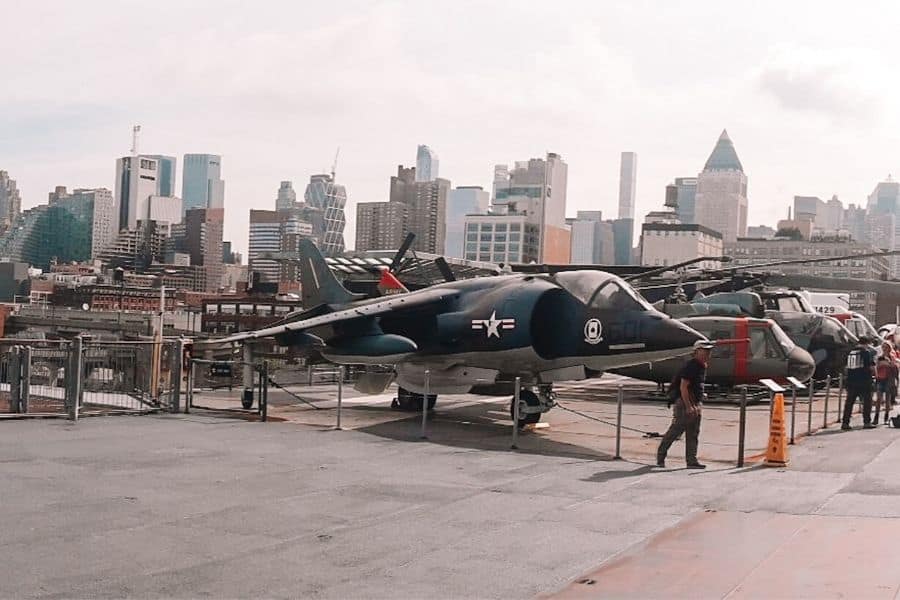
Contributed by Anjali of Travel Melodies
The Museum of Science and Industry
The Museum of Science and Industry, a sprawling science museum in Chicago, Illinois, is literally fun for all ages!
The gorgeous art deco building dates back to the famous 1893 Chicago World’s Fair, when it was called The Palace of Fine Arts. As one of the few World’s Fair buildings to be built with a substantial stone-and-mortar structure, it was preserved, and even housed the Field Museum (another premier Chicago museum) in its early days. The Museum of Science and Industry in its current form was sparked by a $5 million donation from Julius Rosenwald, the CEO of Sears Roebuck. One of his conditions was that the exhibits should always be interactive. MSI opened to much fanfare in 1933.
Almost eight decades later, Rosenwald’s words have lived on. Interactive exhibits like a 13-foot human heart are some of the centerpieces of the museum. For an extra charge, you can even take a tour of a replica of a coal mine housed underneath the building.
MSI’s collection is incredibly vast. Walking through the main hall, you can see a number of aircraft suspended from the ceiling, such as a Boeing 727, a WWII-era Spitfire, and a Stuka dive-bomber–one of only two complete models in existence. One section alone houses an entire WWII German U-Boat. There’s also the Apollo 8 command module and a replica of the Pioneer Zephyr, the first diesel-powered passenger train. You can also view an entire miniature replica of the downtown Chicago Loop.
General entrance to the museum costs $22, with children age 11 and under getting in for $13. You can also get tickets to MSI as part of the CityPass: Chicago booklet.
Unfortunately, as of March 2020, the Museum of Science and Industry is closed due to coronavirus. However, there is a $2 discount for virtual exhibits accessible online.
Contributed by Alek of 9 to 5 Voyager
Griffith Observatory
Griffith Observatory is one of the best science museums in Los Angeles (arguably the country) and makes for a perfect activity for couples, solo, or families! Griffith Observatory has been featured in many movies including The Terminator, Charlie’s Angeles, Transformers, and La La Land because the picturesque building sits upon Mt. Hollywood overlooking the Los Angeles skyline and the Hollywood Sign.
The free museum features showcases and exhibits on the phases of the moon, the role of the sun in our solar system, history and progress of astronomy, and a fun, interactive exploration of the planets in our solar system (plus Pluto). One of my favorite parts of this museum is that you can see how much you weigh on each planet! I’m also a chemist so I love the interactive periodic table that has samples of each element (when possible).
Don’t forget to watch the free films in the Leonard Nimoy Event Horizon or catch a ticketed show in the Planetarium, which is the only part of the museum you have to pay for. It’s definitely worth it though and sometimes provides a much-needed air-conditioned break from wandering Griffith Park. Outdoors you’ll find beautiful panoramic views of Los Angeles and hiking trails that cover the mountain. If you look to the right, you’ll spot the Hollywood sign on an adjacent hill. You can also find entrances to the large telescopes upstairs outdoors, which occasionally are open for star gazing at night! Whether you’re in it for the movies, the science, the views, or just want a fun free thing to do in Los Angeles, Griffith Observatory is the perfect spot!
Location: 2800 East Observatory Road, Los Angeles, CA 90027
Cost: FREE except for Planetarium shows (the room featured in La La
Land), which are $7 per adult, $5 per student and seniors, and $3 for
children ages 5-12.
Contributed by Alanna of Periodic Adventures
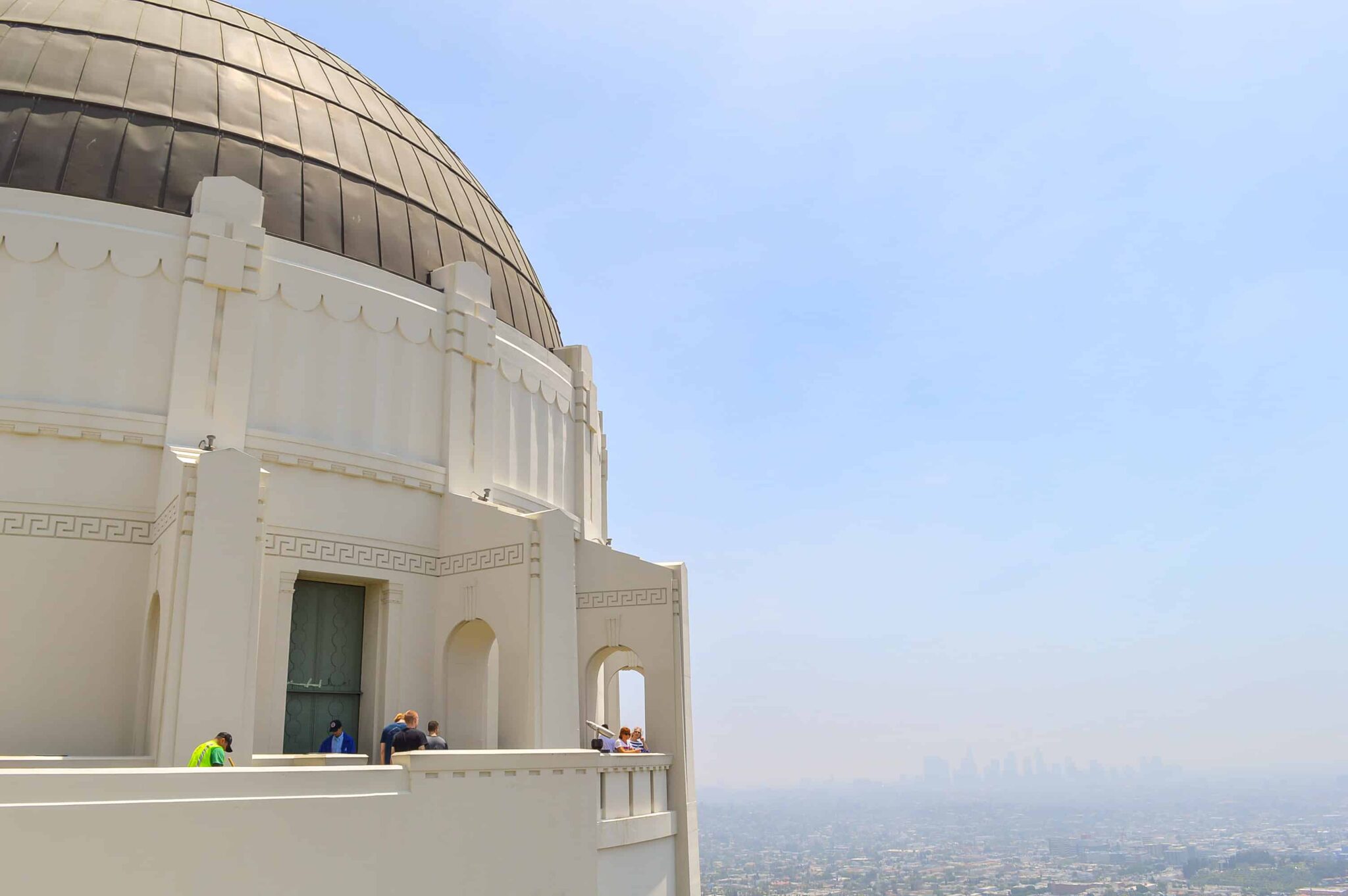
California Academy of Sciences in San Francisco
The California Academy of Sciences in San Francisco’s Golden Gate Park offers an aquarium, a rainforest, a swamp, a natural history museum, and a planetarium, all under one roof. It’s no wonder it makes it on our list of the best museums in the United States! You can spend a morning or the entire day perusing all the areas of this museum. You’re sure to find something to interest everyone in your group.
A massive T. rex greets you in the main lobby. Other natural history items include an 87-foot-long blue whale skeleton that hangs from the ceiling. You’ll also find a rotating 30-foot Foucault pendulum and be hypnotized watching the ball swing slowly back and forth. Here are other main areas of the museum.
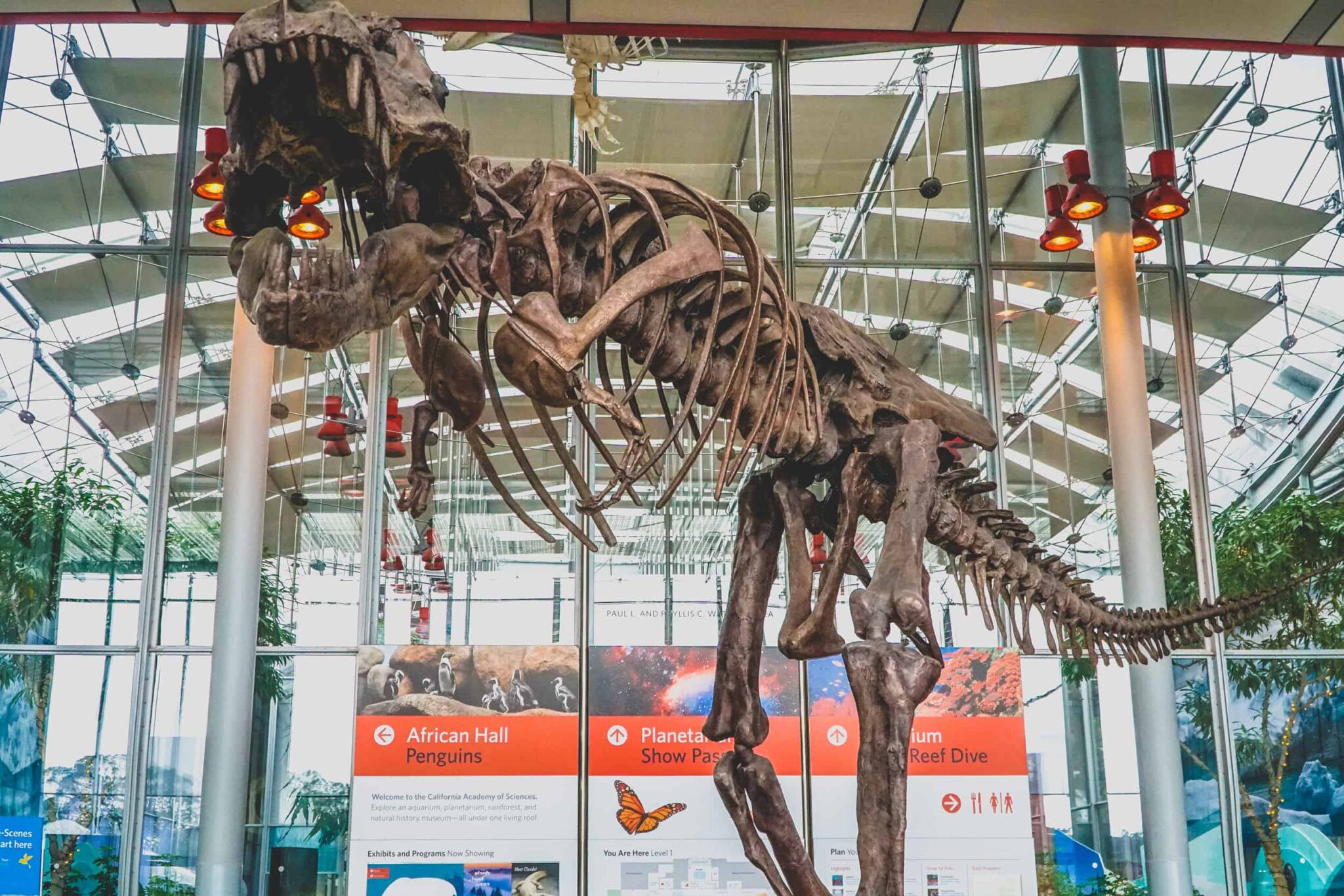
The aquarium. My favorite area, the aquarium, is vast and you can wander here, seeing sea life below you as well as swimming in glass tanks above you at other points. Many exhibits are shown on different floors, so you can study the fish and other sea creatures up close and from several angles. About 40,000 sea creatures live in this aquarium.
The Swamp. This area features an ancient albino alligator named Claude. You can observe him from above and then go to the lower floor and see him closer to eye level through the glass.
Gems and Minerals. The gems and minerals on display in the museum will fascinates anyone interested in geology. You can marvel at nearly 400 dramatic, colorful specimens from the Academy’s collection.
The Rainforest. A main attraction of the Academy of Sciences is the four-story rainforest. Enter and wind up a curved ramp among trees and tropical plants. A glass dome 90 feet in diameter encloses this biodiverse display. Butterflies flitter around you. I learned that they love oranges. Frogs attach themselves to walls and birds fly about freely inside.
The Living Roof. End your day at the museum with a visit to the Living Roof. Solar panels and a weather station are here, but the real attraction for visitors is the vegetation covering the hills of the roof. More than one million plants provide a home for birds, insects, and other creatures.
The Academy of Sciences is open every day of year. Prices: $35.95 for adults, $25.95 for children ages 4 – 11, and $30.95 for ages 12 – 17 and students. Visit the museum website to learn more about the programs and exhibits.
Contributed by Sharon of Exploring Our World. Follow along with her on Pinterest
Museums of San Diego
San Diego offers some amazing museums. Balboa Park has 15 museums all in one location. In the Marina District, there are also interactive ships such as the USS Midway and at the Maritime Museum that you can actually go aboard and explore.
When planning any vacation we usually check out the ASTC program to see if our local museum pass can get us into museums when we travel. In San Diego, we found that the Fleet Science Center and the San Diego Natural History Museum were included.

Admission for the Fleet Science Center is normally $22 for adults and $18 for children and for the Natural History Museum it is $20 for adults and $11 for children. We have saved so much using the ASTC program when we travel.
Balboa Park
Balboa Park is so beautiful and the buildings in which each museum is located are incredible works of art. We decided to go to the San Diego Natural History Museum. This is a great museum for families. There is an interactive camping section where you can pretend to camp and learn all about the creatures outside. We spent about an hour and a half in the NAT and felt like we were able to see a lot.
You could easily museum hop in this area as everything is relatively close together. There are also free shuttles that will transport you from each museum.
USS Midway
One of our favorite museums in San Diego is located in the Marina District -The USS Midway. The USS Midway is a retired Navy ship. It was in use from WWII through Desert Storm. My kids loved climbing in airplanes and exploring how sailors lived while on the ship.
Admission is $26 for adults and $12 for children.
Contributed by Lisa of Planning Away
SPYSCAPE in New York City
SPYSCAPE is a newly open fully-interactive spy museum in the heart of Manhattan, New York City. With so many high-quality traditional museums, the SPYSCAPE museum stands out by taking a new approach to how visitors absorb the information presented. Unlike traditional museums where you go from exhibits to exhibits, reading paragraphs after paragraphs, SPYSCAPE allows your entire body to be part of the learning process.
Throughout the visit, guests can partake in many of the interactive tasks such as surveillance, detecting liars, and even a laser maze. Your performances in these interactive tasks are then recorded into your own personal account. At the end of the museum, you will be assigned a role in the spy community based on how well you performed. Some of the titles you can receive are hackers, surveillance officers, and others.
Like traditional museums, SPYSCAPE also has plenty of readable information about the different aspects of being a spy. It even talks about the famous Enigma machine used to defeat the German in World War II. With the perfect mixture of getting your mind and your body active, this museum is suitable for kids and family!
SPYSCAPE is located at 928 8th Ave, New York, NY 10019, a few blocks away from Columbus Circle and Central Park. It is open from 10 AM to 9 PM daily and the entrance cost varies depending on the group.
For an adult, a single ticket costs 70 USD. For a child under 12, it is 58 USD. For a family (2 adults + 2 children or 1 adult + 3 children), the cost is 215 USD. For students, the cost is 58 USD.
Contributed by Sean of Living Out Lau. Follow along with him on Instagram!
Paley Center for Media
Have you ever wished to watch a specific episode from that obscure T.V. show you remember loving as a kid? Located just outside Rockefeller Center in New York City, the Paley Center for Media is a museum to get lost in reruns of your most favorite T.V. shows, radio broadcasts, and even footage from old Olympic Games. Originally named the Museum of Broadcasting, the museum was founded in 1975 by William S. Paley to “lead the discussion about the cultural, creative, and social significance of television, radio, and emerging platforms for the professional community and media-interested public.” It was renamed in 2007 to the Paley Center for Media to encompass all forms of media entertainment, including T.V., radio, movies, streaming, podcasting, and more.
When you visit the Paley Center, plan to spend your time getting lost in The Archives. Indeed, they have a collection of over 160,000 different broadcasts in their database. Once you select a program, like The Beatles’ first appearance on The Ed Sullivan Show, or one of your favorite Nickelodeon shows from the 1990s, you’re welcome to view it solo or in a small group with up to four people. Or, stop by for one of the Paley Center’s many organized screening events on one of their theater-sized screens.
Recent exhibitions include The Soprano’s 20th Anniversary special, the NFL 100, LGBTQ+ Stonewall Anniversary Weekend Screenings, and a Doctor Who Christmas Episode Marathon. Admission to the Paley Center for Media is free for up to 1.5 hours, but they do have a suggested contribution. Access to their screenings is free as well, but make sure to get there early as they’re first-come-first-serve.
Paley Center for Media 25 West 52 Street New York, NY 10019
Free Admission for 1.5 hours, suggested contribution is $10 for adults, $8 for students and seniors, $5 for children under fourteen
Contributed by Lyndsay of The Purposely Lost. Follow along with her on Instagram
The Children’s Museum of Indianapolis
From baby to 80+ years old, the Children’s Museum of Indianapolis offers joy and amusement for hours upon end to everyone. Adults will find just as many opportunities as children to reminisce about childhood as kids will to play and explore.
As one of the largest children’s museums in the world, you need to devote an entire day to explore the facilities. With over three floors filled to the brim with activities, things to touch, and actors to interact with, everyone in your group is going to love a day at the Children’s Museum of Indianapolis.
Part of the bottom floor is completely devoted to dinosaurs. You’ll find life-size replicas, places where you can practice your paleontology skills, and where you can watch real scientists work with dinosaur bones. On this floor, you’ll also find an Egyptian exhibit, where you can explore the tombs of pharaohs, and an interactive exhibit on the Terracotta Warriors. Even if you’re not a huge fan of history, you won’t want to miss these experiences. Finally, the bottom floor features a rotating exhibit which at the time of writing was an astronaut exhibit (they always have a planetarium). The exhibit allows you to experience what it would be like to try and live in space, from growing your own food to eating out of tubes and sleeping strapped down.
On the first floor, you’ll find rotating exhibits that have been everything from a circus exhibit where you can walk a virtual reality tightrope (it’s scarier than it sounds!) and a Doc McStuffins exhibit. You’ll also find a rotating exhibit that lets you experience daily life in another country. The museum works with a local family of the country and models the exhibit off of their life, in order to make it as authentic as possible. The exhibit has featured everywhere from China to Greece.
Continue up a flight and you’ll find an area specifically dedicated to those under 3 years old and on the top floor, you’ll find another rotating exhibit (it was recently about dancing throughout the ages) and a science area, which is absolutely a must-see section of the museum, although really, an ideal day features every single floor.
Submitted by Alysa of Voyaging Herbivore: Ethical, Sustainable, and Plant-Based Travel. Find her on Instagram.
Strong Museum of Play
The Strong Museum of Play in Rochester, New York, is based around the world’s largest collection of toys. However it is much more than just a toy museum: it is also an exploration of the concept of play, and its importance in stimulating imagination and creativity in both children and adults.
The museum was founded by Margaret Strong in 1968 and included her personal collection of toys, dolls, and games. Since that time it has moved into new, purpose-built, premises and acquired new exhibits and archive material. A popular addition is the Dancing Wings Butterfly Garden, with hundreds of native and tropical butterflies in a rain forest environment.
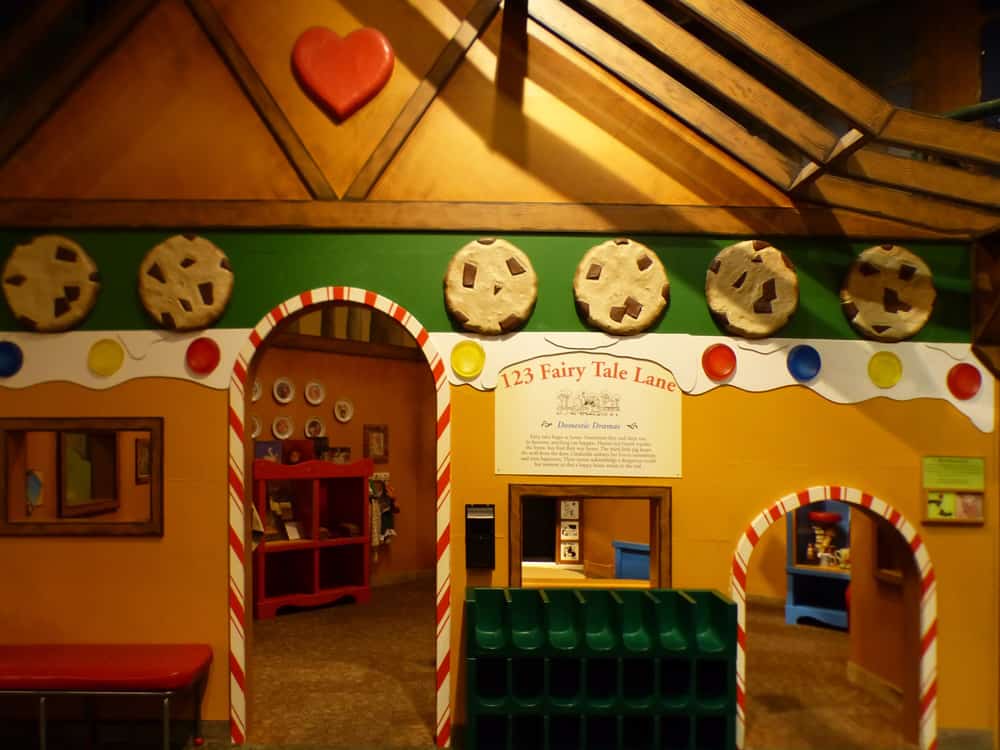
The Strong Museum makes an ideal day out for families, with lots of interactive exhibits and games. There is a mock-up of a Wegmans store, with trolleys and checkout counters, a carousel and a ride-on express train. Adults will enjoy the museum too, with or without children. The giant walk-through kaleidoscope is a hit with all ages, and there are video games, pinball machines, and much more. The museum also attracts students of the history and psychology of play. As you walk around there are inspirational quotes and explanations of how particular activities strengthen the body or the intellect. And there are sections on the history of play and playthings (a sort of journey through American social history, with early versions of Cluedo and Monopoly, and a gallery devoted to superheroes).
The Strong Museum of Play is located at One Manhattan Square in central Rochester. Admission is $16 per person (free for under-twos).
Contributed by Karen of WorldWideWriter
Which one of these museums in the United States will you visit next?



Start Planning Your Next Trip!
- Plan the best weekend getaway ever!
- How to perfectly pack everything for your next trip
- How to prepare for any trip
- Book your accommodation: For booking hotels, we like to use Hotels, Booking, and Agoda. For more unique stays, we like to use Airbnb.
- Book your flights: For booking flights, we like to use Kiwi or Student Universe to check for deals.
- Activities and tours: Our go-to resources for booking activities and tours are: Groupon, GetYourGuide, and Viator. Also, check if your city is available on CityPass for extra discounts.
- Luggage: When we travel, we love using our SwissGear Energie series luggage set. This hardshell luggage is lightweight, spacious, and affordable! We love how much of our stuff can fit in this luggage.
